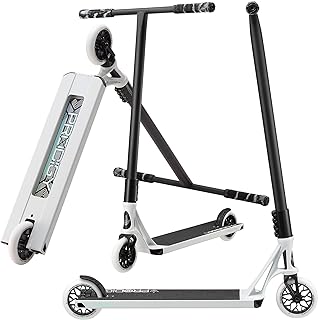5 important factors worth considering when looking for the best outdoor access points
Outdoor connectivity is increasingly important in our daily lives, so choosing the right outdoor access point is crucial. Besides considering the hardware, factors like weather resistance, network range, and versatility in deployment are all key to a successful outdoor networking experience. When looking at different outdoor access points, it’s important to carefully evaluate their performance, durability, and adaptability to make an informed decision. The combination of technological improvements and the need to withstand outdoor conditions highlights the importance of these factors in shaping how we connect outdoors.
See our guide to the best outdoor access points.
Wireless range
When setting up outdoor WiFi access points, it’s important to consider the wireless range. An access point’s ability to provide strong and reliable WiFi coverage across an outdoor area is crucial. A larger range not only means better connection for users, but it also eliminates dead zones that can slow things down. While access points with a longer range may cost more upfront, the benefits of improved coverage and performance make it a worthwhile investment.
Having a strong wireless range is especially important outdoors where obstacles and interference can weaken the signal. By choosing access points with a greater reach, businesses and organizations can expand their network coverage to reach distant areas without sacrificing connection stability. In today’s world, where outdoor spaces are used more for work and fun, focusing on wireless range in access points is not just about convenience, but a strategic choice that can improve user experience and overall efficiency.
Antenna type and gain
When setting up outdoor access points, it’s important to think about the type of antenna and its strength, as these factors can greatly affect how your network performs. The type of antenna you choose determines how far your signal can reach, how strong it will be, and how reliable your wireless network will be. Whether you go for omnidirectional antennas that send signals in all directions or directional antennas that focus on specific areas, knowing the pros and cons of each type is crucial for getting the most out of your network setup.
Additionally, the strength of an antenna directly impacts how far and how strong your signal can be, which is important to consider when choosing outdoor access points. Antennas with higher strength cover more distance but might not work as well at close range, while antennas with lower strength provide stronger signals in a smaller area. Finding the right balance for your outdoor space is important for getting the best performance from your network. By carefully thinking about the type of antenna and its strength when selecting outdoor access points, you can create a strong and reliable wireless network that meets your needs efficiently.
Weatherproof rating
When choosing outdoor access points for your network, it’s important to consider the weatherproof rating. Investing in access points with a high weatherproof rating means they will last longer and perform better, even in tough outdoor conditions. Access points that can handle extreme temperatures, moisture, and dust will give you a reliable network connection for years to come. By focusing on weatherproof ratings when you make your purchase, you’ll protect your investment and reduce the need for frequent replacements due to weather damage.
A high weatherproof rating not only makes your outdoor access points last longer, but also improves overall network stability and performance. With weather-resistant access points, you can be confident that your network will keep running in rainy, snowy, or sunny weather. Good connectivity is crucial, especially outdoors where environmental factors can disrupt signal strength and connection reliability. By choosing access points with excellent weatherproof features, you’ll ensure uninterrupted network access for users like employees, customers, or guests. Prioritizing weatherproof ratings is more than just being cautious; it’s a proactive way to make your network work efficiently and reliably in any outdoor setting.
Power source options
When choosing power sources for outdoor access points, it’s important to consider options beyond just electrical outlets. Solar energy is a sustainable and cost-effective choice that can help reduce long-term expenses and make your network setup more reliable, especially in remote locations.
Using Power over Ethernet (PoE) for outdoor access points can also make installation easier and more flexible. PoE technology allows both power and data to travel through a single Ethernet cable, making setup simpler and reducing cable clutter. This can help overcome distance limitations and power issues, making it easier to integrate outdoor access points into existing networks.
Overall, embracing solar power and PoE technology can improve the efficiency and reliability of outdoor networking setups, offering organizations a more scalable and adaptable solution. These innovative energy sources can take outdoor connectivity to new levels, making it easier to maintain and expand your network infrastructure.
Security features
When you’re looking to buy outdoor access points, it’s important to focus on security features to protect your network from cyber threats. Choosing access points with strong encryption like WPA3 keeps your data private and safe from hackers. Access points with intrusion detection and prevention systems add another layer of protection by stopping unauthorized access attempts before they cause problems.
Look for outdoor access points with advanced authentication methods like multi-factor authentication, which only allows authorized users to connect. Get access points that receive regular firmware updates to fix any vulnerabilities quickly and make your network more resilient against new security risks. By using these secure access points in your outdoor area, you can protect your network and feel confident that your data is safe from cyber threats.
Conclusion
Outdoor access points are crucial for keeping us connected and productive in our constantly changing digital world. By combining technology with nature, we not only improve our quality of life but also find new ways to balance urban growth with environmental protection. As we move towards a future of limitless connectivity, where outdoor access points are key for a connected world that values both ease of use and respect for nature.


